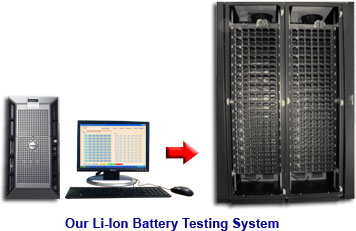

Temperature and equipment accuracy have a large impact on the delta OCV method measurement. Temperature and Equipment Accuracy on the Delta OCV Measurement Method This is a more-likely consideration for a pouch cell battery pack design where uneven thermal expansion of different materials may put pressure on the cell stack.

Increased physical pressure on the surface of cell induced by temperature changes, can become a secondary factor, contributing to additional self-discharge. A 2 degree C change is about what one may see in a temperature-regulated building over the course of the day or over many days. Thus, a 2 degree C change produces about 15% change in the cell ’ s self-discharge. One can expect the self-discharge to typically double for every 10 oC rise. Temperature likewise impacts the cell ’ s self-discharge. Regardless of the actual %SoC level used, it is imperative that testing is always conducted at the same SoC level every time, to achieve consistent and valid results. It is worth noting internal pressure can possibly become a factor at high SoC, due to electrode swelling.Īs can be seen, the % SoC has a very large impact on self-discharge. Conversely, at the other end, it was found the self-discharge increased much more rapidly over 80% SoC. It was found that the self-discharge gradually fell off towards zero as the % SoC went to zero. Note that some factors impact just the cells, just the measurement methodology, or both.įigure 3: Li-ion cell self-discharge versus % SoC. Top factors affecting self-discharge measurement are illustrated in Figure 2. This is true for either of the two methods for measuring self-discharge on lithium-ion cells, as well as trying to establish a correlation between the two different methods. Unless testing is very carefully controlled, the results will not be consistent, valid, or correlate well.

The underlying challenge is that self-discharge is f ar from being relatively fixed and constant. However, in practice, most find it very difficult to get consistent and valid results with good correlation across multiple lots and test runs. This may seem straightforward in principle. At equilibrium, the current being supplied by the external source equals the cell’s internal self-discharge current, as the cell is being held at a constant state of charge (SoC) by the stable external voltage source.Ī top priority for testing cells for self-discharge is getting consistent and valid results. This is accomplished by holding the cell at a constant potential with a very stable external voltage source. In comparison, the potentiostatic method directly measures a cell’s internal self-discharge current is typically on the order of an hour. This is the more traditional method used for measuring self-discharge.

A drop in OCV is an indirect indicator of loss of charge. Very briefly, for the delta OCV method, the Li-ion cell’s drop in OCV is measured over an extended period, typically weeks. The batteries have a very long storage time and can be used in very cold weather.Figure 1: Self-discharge measurement methods. This battery is very impressive at high current, but at low loads it is not much better than alkaline batteries (Except it does not leak). The 3A curve starts with a dip, then it raises again, when the battery gets warm.ĭue to the higher voltage, it has more energy than alkaline. Up to 1A the capacity is nearly constant and even at 3A it can deliver energy. I am not that impressed with the 11x longer specification, you must compare to some really bad batteries for this to be true. Notice that the unloaded voltage for lithium batteries is 1.8 volt.


 0 kommentar(er)
0 kommentar(er)
